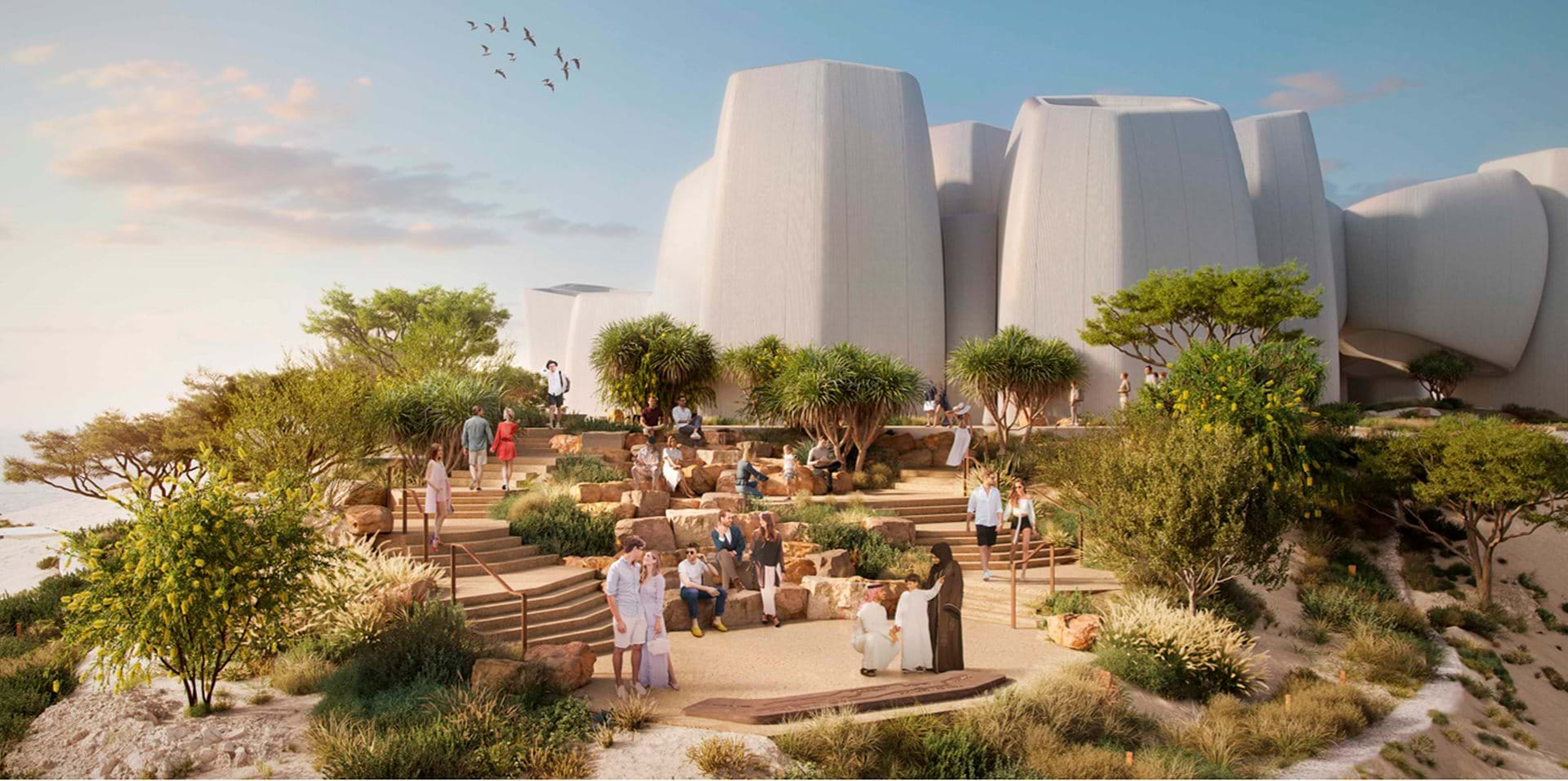Designs for the “world’s first fully immersive experiential marine life center” have been unveiled by British architecture studio Foster + Partners to be located on Saudi Arabia’s Red Sea coast, according to a press release from the world-renowned architecture firm.
The design for the museum, which is planned for the Triple Bay Marina in AMAALA, “gives tourists a glimpse into the wonders of the marine environment and the challenges we face to conserve our natural habitats,” Foster + Partners said.
“We are delighted to be working closely with The Red Sea Development Company to realize this unique project. Integrated exhibition displays take visitors on a journey through the Red Sea, as they travel down through the building towards the immersive deep reef ‘big reveal.’ At the heart of the space a large, suspended semi-spherical tank – a real first-of-its-kind – contains local marine wildlife within a stunning coral exhibit,” Gerard Evenden, Head of Studio, Foster + Partners, said of the designs and plans.
The visitor journey through the building is “vibrant and educational, giving people an in-depth understanding of the research that goes on in the institute’s labs. It starts at the entrance where visitors are flanked by colorful tanks as they walk towards the central exhibit. The central canopy, which spans across all four of the building ‘clusters’ provides both shading and open to sky area for ventilation. The exhibitions displays are integrated with the architecture of the building, illustrating the journey through the Red Sea – from shallow mangroves and sandy beaches to the immersive deep reef big reveal, which creates an awe-inspiring spectacle for visitors as they travel down through the building into the ocean,” the firm said.
Foster + Partners is also the architect for the new Red Sea Airport, which will serve the area by 2023.
The planned institute comprises three floors, which are located above ground, below ground and under water. In addition to the immersive exhibition spaces, visitors can enjoy researcher-led educational tours of the laboratories, as well as underwater guided tours of the Red Sea in the latest submersible vehicles.
More than 40 per cent of the site is covered by native plants, and a system to collect runoff water prevents erosion and pollution.









